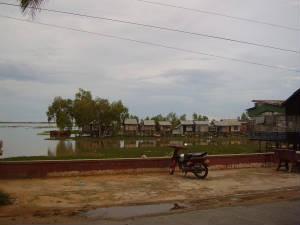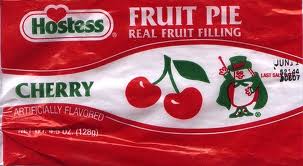|

|
| Photo courtesy of Megan Stolz |
Relationship With Water
by Megan Stolz
Joanne tells me
I need a friend or an adventure. She's the medical officer for our international service program in Cambodia and it's her
job to make sure I stay happy and healthy while in-country. Right now I'm struggling with the happy part. So, to keep me occupied,
she poses a question to get me started on my new hobby of curiosity: Where does the ice come from?
My relationship
with water is more complex in Cambodia. Acquiring drinkable water is a process. I can buy bottled water while I'm out, but
at home with my host family I need to have my own source and this comes in the form of my government-issued water filter.
First, I take a pot to the large communal water basin in the bathroom. The basin is as tall as my hip, takes up a third of
the room, and is refilled every few days by pumping water from the well in the backyard. I fill my pot and take it back upstairs,
where I pour a cap-full of Clorox into it like we were taught in training. The Clorox is to kill any microbes in the water.
After about ten minutes, I begin pouring the sanitized water into my filter. The filter is made of metal and has two chambers:
the upper chamber, which holds two ceramic candles that filter the water, and a lower holding chamber with a spigot. My pot
holds more water than the upper chamber can so I pour the water in two shifts. When I'm not pouring sanitized water in, my
filter is always covered with the lid, partly so mosquitoes don't lay their eggs in the standing water. Mosquitoes in Cambodia
carry malaria, dengue fever, and Japanese encephalitis; I take a daily pill to avoid one, wear bug spray to prevent the others,
and sleep under a net every night.
Having my own
water source helps me feel more independent in a country where I often feel helpless. I am able, at least, to slake my own
thirst. Keeping my water filter in my room makes my water source seem protected and safe. I am grateful to live in a country
where water is plentiful; Cambodia has a monsoon season and every house in the country has large clay pots outside to collect
the rainwater. I wonder how I would deal with living in a country where water is a precious commodity. Here, water is so abundant
that it's not uncommon for people to take three to five bucket showers a day simply to stay cool. It's a hot country. Phnom
Penh, the capital, sits 11° above the equator. After particularly heavy rains, the streets flood and I spray water as I ride
past on my bicycle. When I wash my clothes, I do so by hand, with a small plastic basin at my feet, and I often splash. I
don't mind – it keeps my feet cool and I enjoy the sound of falling water as I pour it from container to container.
It makes me feel like I'm a little more connected to the cycle.
In the mornings,
when I go to class, my students greet me by asking, “Niek cru, how are you? Have you eaten yet?” “Yes,”
I say, “I ate already.” “You ate bread,” they say and I smile. I think my students are amused that
I refuse to eat rice for breakfast and substitute bread. Before school starts, I sit at a restaurant across the street and
order a small baguette. I also order cafe dtuk dtah go dtah gah, or iced coffee with condensed milk. It's sweet and, combined
with the baguette, I can pretend I'm maybe eating in a cafe in Paris. The coffee costs about 1,500 riel and the bread 500
riel which means I can eat breakfast for about 50˘. The condensed milk is fattening, so I probably shouldn't drink so much
of it, but it's really the ice that does me in every time. In a tropical country like Cambodia, my weakness is anything cold.
My favorite Cambodian
dessert is also cold: shaved ice, red beans, more of that condensed milk, and soy milk. It feels refreshing and the beans
make me feel less guilty about the fattening ingredients. The first time I had it was with my Khmer co-teacher and now I go
to the same lady with her cart set up in a corner of the school. My neighbor also sells desserts, along with other sweet treats.
Sometimes I sit at her stall too. We don't talk much but I like to watch and I like being in her company. She sometimes gives
me dessert but I never ask for it because she refuses to take any pay for it. Her house and my house are in the same compound,
surrounded by the same fence, so it doesn't take long for me to speculate that she's actually a relative of my host family.
My neighbor keeps
a large block of ice in a cooler during the day for her iced desserts. When she needs more shaved ice, she pulls it out and
set it on a carving board. She takes a ragged saw and runs it back and forth across the block for a guideline. Then she takes
a machete and chops a chunk from the larger block. Putting the block away, she takes the smaller chunk and shaves it against
a large cheese-grater (which is my word for it – there is no such thing as real cheese in Cambodia). This shaved ice
goes into a smaller cooler, ready for her next customer.
I
haven't seen where my neighbor gets her ice from. My fellow volunteer Jess tells me she's heard that there are large warehouses
where people get ice early every morning. I think of the fish markets of Seattle or New York, where chefs must go early in
the morning to get the freshest, most choice picks of the day. JaNise, another volunteer, says she doesn't want to know where
the ice comes from and I can't blame her for her active ignorance. Cambodians are famous for the methods they use to transport
things from one place to another and it's not unusual to see piles of goods strapped to the back of a pick-up or a moto or
a bicycle. Sometimes I have seen people with those large blocks of ice strapped to the back of their bikes. This known method
of transport calls to attention the contrast between my care with my water filter and my carelessness with my iced treats.
I do not think about the fact that this water comes from an unfiltered source. I do not think about the dust that blows onto
the blocks as they are transported from one location to another. I don't really even spend much time questioning how a tropical
country whose infrastructure was destroyed only forty years ago even has ice.
I left Cambodia
before I got an answer to Joann's question. I don't really know where the ice comes from. There are a lot of things about
Cambodia that I don't know.
When I return
to the United States, I will turn on the tap and fill a cup of water from the faucet. I will cool it with a cube of ice from
the ice-maker in the freezer. I will not question where it comes from. At least I will still be able to slake my own thirst.
Then I will place my cup in the sink and carry on with my day. Simple as that.
Megan Stolz is an MFA student at the University of Baltimore
and an alum of Hollins University. In 2009, she spent four months in Cambodia with the Peace Corps, which inspired this personal
essay. Her poetry has been published by Welter and The Barefoot Review.

Say Goodbye to the Hostess Cherry Pie
by Shawna Katie Bohn
Matthew,
the sixteen year old, was on his way to the store when Ham stopped him. “Get me a Hostess Cherry Pie,” he said,
handing Matthew a coupla crumpled dollars.
“Oh,
Honey! Don’t!” I blurted out before I could stop myself.
Ham
turned to glare at me, no doubt expecting some tiresome lecture about the Impending Doom of Diabetes. But that’s not
what bothered me. “It’s just that, well ... it’ll suck!”
I
knew I was right, that he’d be sorely disappointed with his Hostess Cherry Pie. Those gas station snackies are just
one of the legions of sins Ham and I renounced when we converted to Slow Foodism – we hadn’t eaten one for ages.
And I knew that our palates had changed so much after months of eating fresh, unprocessed foods that the sins we used to revel
in — McDonalds’ Filet-O’ Fish Sandwiches, Hostess Cherry Pies, that wonderful Ray’s Chili that comes
with a layer of congealed orange grease in every can – would just taste flat and lacking in comparison to the good stuff
we’re now used to. Like with most of life’s transgressions, the thought of the sin would be much more satisfying than the sin
itself. But this seemed a rather complicated answer and Ham was impatient for Matthew to get going, so I said this:
“They
just don’t make ‘em like they used to.”
And
I could see by the slump in his shoulders that I had him. “Yeah,” he said, shaking his head sadly, “They
used to be fresh and filled-to-bursting with cherries. Now you’re lucky if you find a single cherry inside all that
goo.”
“And
they used to be much bigger, and covered with glaze,” I chimed in. “Like a Krispy Kreme Donut. Now they’re so small and dry!”
Ham
had a faraway look in his eye now, and the conversation quickly veered into other processed foods that used to be great back
in the day but had deteriorated in quality over the years: Cap’n Crunch Cereal, Hundred Thousand Dollar Bars, Twinkies,
any kind of cookie we could remember.
“Oreos,
for instance, used to have tons of frosting inside!” Ham shouted, as Matthew rolled his eyes in bored disgust. “Then
they started skimping on the frosting, so we’d put two Oreos together to make one big one!”
Matthew
yawned.
“Then
they came out with the Double-Stuf Oreos, and those were good for a while,” I replied.
”Now ya gotta put two Double Stufs together to make ’em even worth eating!”
Ham
and I commiserated for a long while — seems not much is as good as it used to be. But in the end, my advice went unheeded
and he remained undeterred. And when Matthew finally extricated himself from the sap of our nostalgia and left for the store,
he took those two dollars with him to bring back a Hostess Cherry Pie.
Ham
ate it quietly, all by himself. And I, for once, had the good grace to not say a word.
Shawna Katie Bohn is a writer,
travel planner and culinary guide with a voracious appetite for good food and friendship. In 2010, she founded Salut! A Culinary Adventure Club to share her experiences with other foodies. Shawna loves to travel and wants
to taste the whole world, but she always returns home to Chicago, Illinois.
|

